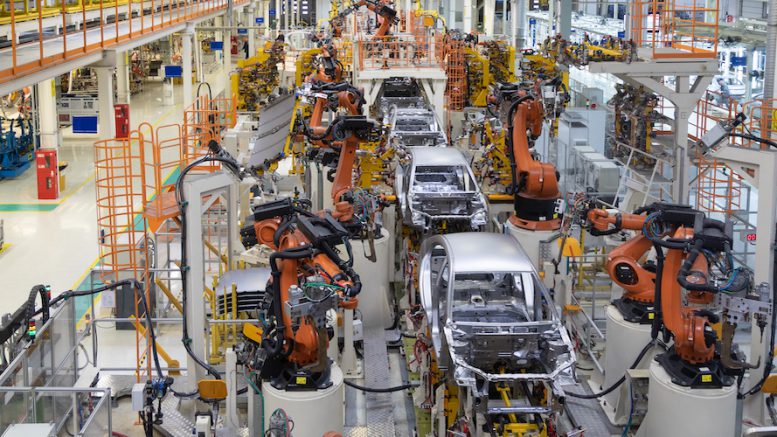Against China’s production boom, Western countries are trying to figure out how to build their clean-tech industries without being undercut by cheaper Chinese products. They’re stuck between wanting to secure production at home and the harsh reality of China’s ability to produce items at cost, leading to lower prices, says Antoine Vagneur-Jones, head of trade and supply chains at BloombergNEF (BNEF).
“Historically, we’ve never really been at a stage where we’ve had this much overcapacity,” Vagneur-Jones told The Northern Miner Friday in an interview. “Western governments need to carefully evaluate their priorities and make tough decisions regarding which sectors they want to support domestically.”
China’s trillion-dollar pivot from real estate to clean-tech manufacturing is seeing it produce more than it can sell and forcing the West to play catch-up. This growth has disrupted global market equilibriums by flooding markets with lower-cost products, which has, in turn, challenged the economic viability of clean energy projects and manufacturing in other countries.
In a March 7 report titled ‘China’s clean-tech overcapacity threatens onshoring dreams,’ Vagneur-Jones shows that Chinese EV exports have increased by more than 1,500% over three years. From January to October 2023 alone, the EU purchased US$12 billion or 42% of all Chinese EV exports, highlighting the impact of China’s excessive production rate,— or overcapacity — on foreign markets.
The annual value of China’s solar, battery, and EV exports increased by 117% from 2021 to 2023.

Note: Demand reflects BNEF’s Net Zero Scenario for batteries, while solar demand is BNEF’s forecast. Supply is based on announced plants, some of which may be cancelled. Source: BloombergNEF
Nickel bellwether
Vagneur-Jones says that while the record-defying production is good news for some, the clean-tech glut spells trouble elsewhere, with the mining and metals sectors, particularly nickel, finding themselves on the losing side.
Chinese investments, especially in Indonesia, have created a global nickel oversupply, cratering prices that have made Western mines uneconomic due to their higher production costs.
This is forcing a global re-evaluation of mining strategies, emphasizing the need for diversification and innovation to adapt to changing industrial policies from China, which dominates demand.
Challenging Western resolve
What happened in the nickel market is but a small-scale example of the production over-investment in China.
In less than four years, Chinese banks have transitioned from allocating over US$1 trillion yearly to the domestic property sector to experiencing a net decline in outstanding debt for the first time since 2005, Vagneur-Jones notes in the report. These banks have facilitated about US$700 billion in new loans, often below-market interest rates, to support the growing manufacturing sectors for clean technologies like EVs and batteries.
Vagneur-Jones points out that the jaw-dropping scale of the overcapacity can be gauged with the photovoltaic panel market. Where China accounted for 36% of global demand four years ago, it now commands 75% of global production. This shift resulted from rapid industrial policy adjustments and local government subsidies, Vagneur-Jones says, which dramatically expanded China’s manufacturing capacity and slashed the global market share held by Western companies.
Change or die
This raises big questions about the global future of clean energy production and whether Western goals for local manufacturing can realistically be met. Vagneur-Jones says Western nations face a critical challenge: adapt their domestic manufacturing and supply chain strategies to this new landscape or lose out.
He suggests the West should consider alternative strategies, such as stockpiling critical materials when metals prices are low due to oversupply — or fostering manufacturing in regions outside of China to diversify supply chains and reduce reliance on Chinese products.
China controls 80% of the global supply chains for photovoltaic products and automotive batteries, and over 60% of electric cars worldwide are manufactured in China. This level of market dominance has raised concerns among other countries and led to various trade barriers and protective measures.
The Asian giant currently accounts for about US$469 billion of planned clean-tech manufacturing capacity, exceeding net-zero aligned demand over 2024-2027, according to Vagneur-Jones’ data. These numbers feed into an eightfold planned increase in annual clean-tech factory investment outside China from 2023 to 2025.
“It’s a game of chicken, where if you don’t stay at the cutting edge, your entire production fleet is reduced to being obsolete. We’re in an era where Chinese overcapacity isn’t just reshaping global markets; it’s redefining them,” Vagneur-Jones said.


Be the first to comment on "China’s clean-tech surge shakes markets and tests Western green resolve"